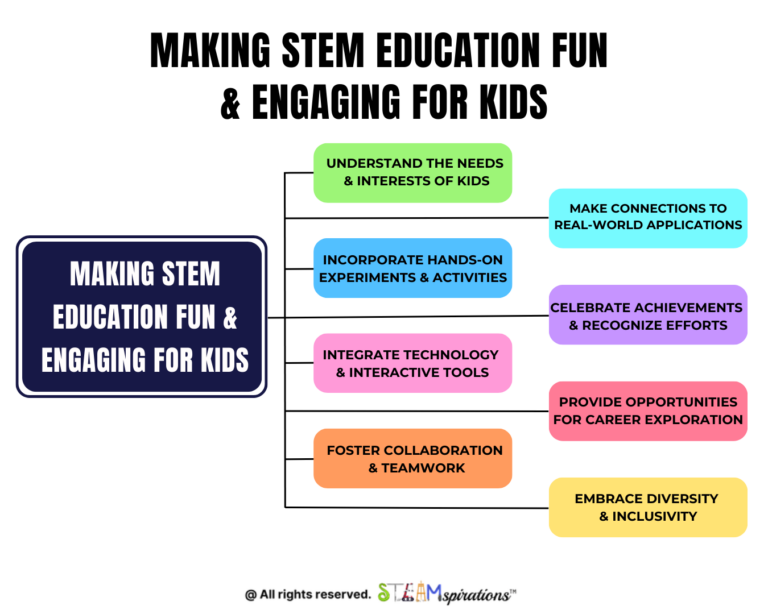Designing is all about turning an abstract idea into a physical reality. It involves a series of steps that help in finding the solution to the problem at hand. The engineering design process is a systematic approach, which challenges traditional design practices and ensures the transparency of the process so that any motivated individual can engage in the design process and produce dream outcomes. It is a decision-making process in which basic mathematics, engineering, and sciences are used to achieve the desired goal effectively using available resources. Defining a problem, setting objectives, synthesis, analysis, building, testing, and assessment are essential aspects of the design process.
Why Does the Engineering Design Process Matter?
In STEAM education, the goal is to promote the participation of students in science, technology, engineering, arts, and math; however, engineering often appears intimidating because of the intense planning associated with it. The key to the successful implementation of STEAM education depends on the effective integration of science, technology, engineering, arts, and math. To increase career and college readiness among students, it is essential to make them experience integrated projects and practices in the classroom. This integration is not possible without engineering, as it connects all disciplines and provides an opportunity for all students to think and build like engineers.
Teachers can incorporate the engineering design process into classroom activities and projects. The engineering design process assists teachers in improving the problem-solving skills of their students while also introducing students to technological disciplines. Applying the engineering design process to STEAM learning is essential for technology teachers, particularly for generating ideas, clarifying a problem, feasibility analysis, and modeling. It is essential to further encourage teachers to expand their skills by incorporating the engineering design process into STEAM learning.
Implementing Engineering Design Process
- Problem Identification
The first step of the engineering design process is problem identification. During this phase, students can be given a design brief. The design brief outlines the scope of the project. There is no single method to define and deliver a design brief. Open-ended questions and issue scenarios can also be employed throughout the description of the design problem.
Open-ended questions without design criteria depend on trial and error or iterative processes. As a result, students may be able to discover the requirements of a design product by using empirical observation throughout the design process, or they may create the final design item correctly by coincidence.
Another popular method for presenting and defining design problems is to use “problem scenarios.” Because the goal of the problem scenario is to find a solution, it is more appropriate to observe an engineer’s solution-oriented approach. Students can develop their design standards and solutions based on the situation. As a result, fixing a challenge encourages students to focus on design. In a problem scenario, key aspects are specified, such as a client (a foundation, society, person, animal, or other entity that will benefit from the finalized design); in open-ended questions, a client is not designated.
Problem scenarios and open-ended questions are designed to increase students’ attention and learning by providing a focus on abstract topics. These expressions are also suitable for engineering. Engineers innovate on existing goods based on specified criteria or create design items that produce solutions depending on the problem.
In addition to open-ended questions and problem scenarios, the design brief can also be presented via a story. Here, the goal is to make students empathize with characters in stories. A character can be placed in a story as a client. In this kind of process, design problems and design criteria are defined by students. This ensures that motivation towards designing can be enhanced since students concentrate on helping a character.
- Generating Ideas and Designing a Solution
Idea generation and design solution is the second stage in engineering design learning activities. The production of ideas is a critical component of the design process. Instructional approaches, brainstorming, writing activities, and laboratory activities are largely employed in this step. Class and group discussions and argument methods are useful means of encouraging students to develop a blueprint for creating tangible products from their ideas. Arguments and brainstorming are vital in the engineering design process for identifying the optimum solution. Although this phase can be challenging and time-consuming for instructors, web-based activities and simulations can help learners build a design idea. Furthermore, teaching subject knowledge using direct instruction techniques, inquiry-based activities, play-based activities, and reading activities can also be effective and facilitate this process.
- Development and Improvement of the Final Design
The last stage of the design process is the “development and improvement of the final design.” Four patterns can be applied to this phase, which includes drawing (an sketch drawn by students that explains their design solution), manufacturing (creating a two-dimensional or three-dimensional product), testing (experimenting with the product outcomes), and redesign (reconstruction process based on the analysis of the test results).
After students create a drawing that meets certain criteria, they create a two or three-dimensional solution to solve the problem. When students are permitted to “test” their design, they also check the preset parameters, and assess their design’s applicability to solve the problem at hand. Designs often go through a “redesign” phase. This is where students test and assess their designs by considering their test findings and produce the best design solution through repeated changes and improvements to their prototype.

